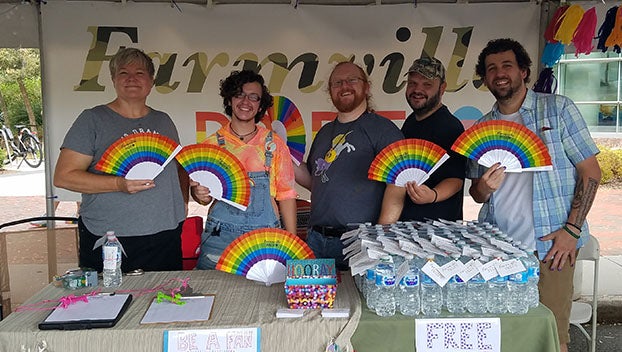Farmville Pride: Flags….Farmville….Pride
Published 10:03 pm Thursday, June 29, 2023
|
Getting your Trinity Audio player ready...
|
Editor’s note: This is the first in what will be a monthly column from Farmville Pride.
Driving around in the summer, you come across a lot of flags. With Independence day in July, you see American flags flying outside of homes and businesses and yard decorations celebrating this country’s freedom from the oppression of British rule.
When you walk into Walmart here in Farmville, you can find a dedicated aisle in the front seasonal section that has American flag-adorned cups and plates, decorations, and even seemingly random things like rubber ducks and pencils. Though my full flag button down from middle school does not fit me anymore, I can find multiple replacements in the clothing aisles. There are a lot of options to show your American pride in stores.
There are state flags, flags with school logos, flags with garden gnomes on them say “You Don’t Gnome.” All of these flags say and mean something more than just the words on them. They mean freedom, unity, school spirit, and the fact that I like gnomes and garden flags.
Whether we agree with what a flag represents or not, the point is that flags can become a symbol of pride and oppression for people. For some, flags can show a point of connection, of community, of allyship. For others, that same flag can trigger warnings to beware of the people who fly them.
Flags have a lot of symbolic power. They help us feel safe. They tell us who to avoid. They can highlight a community and town. They can give us a sense of purpose and belonging.
The LGBTQ+ community is no different. June is LGBTQ+ Pride month, which means we will see rainbow flags, decorations, and apparel adorned across the world. The rainbow flag, which was designed by Gilbert Baker for the 1978 San Francisco Gay Freedom Day Parade, originally consisted of eight colors.
Each color represented something different; something that built hope and love for a community who desperately needed just that. Because of complications with access to specific dye colors, Baker revised the flag the following year to the six colors we see today. The rainbow flag was not updated again until 2017, when LGBTQ+ activist Amber Hikes added black and brown stripes to represent and draw attention to underrepresented persons of color.
In 2018, designer Daniel Quasar added yet a few more designs and colors (pink, light blue, and white) to represent our underrepresented trans and non-binary community. He also moved all five of the new colors to a chevron on the side to represent those living with HIV/AIDS, which completely ravaged the LGBTQ+ community starting in the 1970s. This flag is a common flag used today in the LGBTQ+ community and one that represents Progress.
Erin Waggoner
Farmville Pride



